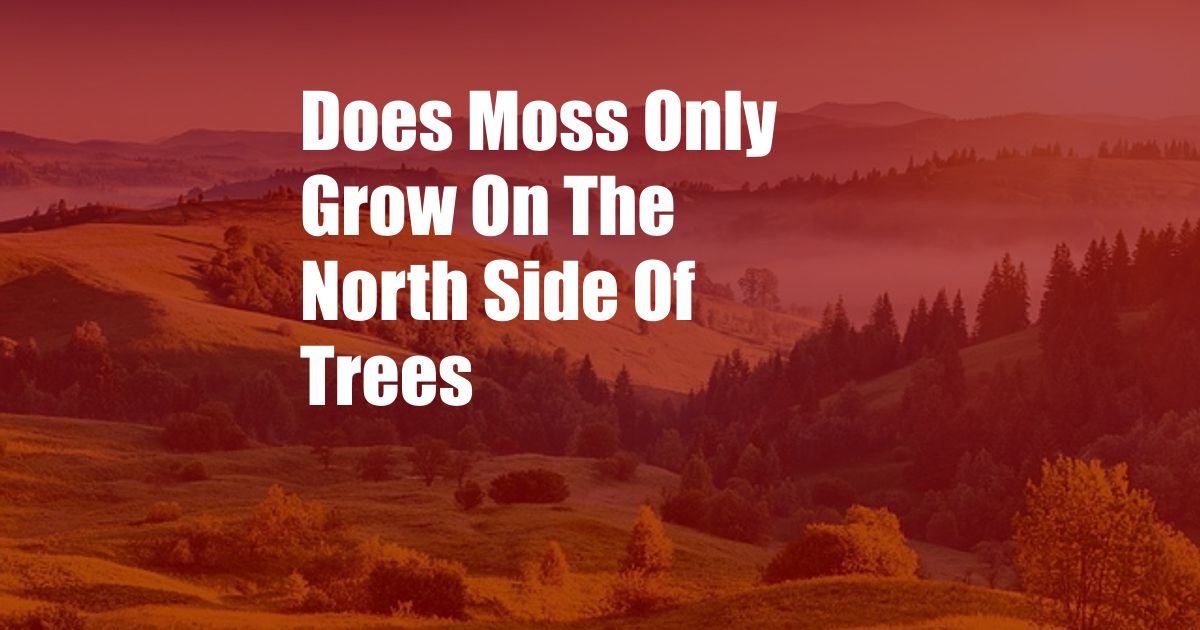
Does Moss Only Grow on the North Side of Trees?
As I strolled through the verdant woods, a peculiar sight caught my attention. Majestic oaks towered over me, their trunks adorned with lush carpets of emerald moss. Intrigued, I couldn’t resist reaching out and gently caressing its velvety surface. As I observed the moss’s intricate patterns, a nagging question began to gnaw at my mind: why did it seem to favor the north side of these arboreal giants?
My curiosity piqued, I embarked on a journey to unravel the mystery surrounding moss’s growth patterns. It turns out that the answer lies in a delicate interplay between environmental factors such as sunlight, moisture, and competition.
Sunlight and Moisture
Light Intensity and Duration
Moss, belonging to the Bryophyte family, is a non-vascular plant that relies on photosynthesis for survival. Like all plants, it requires sunlight to produce energy. However, moss has a unique adaptation that allows it to thrive in low-light conditions. This makes it well-suited for shaded environments, such as the north side of trees.
The north side of trees receives less direct sunlight than the south side. This reduced light intensity creates an ideal environment for moss to grow and flourish. On the other hand, the south side of trees experiences more intense and prolonged sunlight, which can be detrimental to moss’s delicate structure and its ability to retain moisture.
Moisture Retention
Moisture is another crucial factor that influences moss growth. Moss is highly absorbent and can hold up to 20 times its weight in water. This ability allows it to survive in dry environments. However, it also makes moss susceptible to desiccation, or drying out.
The north side of trees provides a more humid environment than the south side. The absence of direct sunlight helps to reduce evaporation, creating a microclimate that retains moisture. This moisture-rich environment is ideal for moss growth, as it allows the plant to absorb and retain the water it needs to survive.
Competition
Competition for resources can also affect moss growth. Trees and other plants produce allelopathic compounds, which are chemicals that can inhibit the growth of other plants. These compounds can be found in leaves, bark, and roots.
On the south side of trees, the presence of these allelopathic compounds can hinder moss growth. However, the north side of trees experiences less competition from other plants, allowing moss to establish and spread more easily.
Conclusion
In conclusion, moss does not exclusively grow on the north side of trees. However, the combination of reduced light intensity, increased moisture retention, and reduced competition on the north side creates an optimal environment for moss growth. These factors allow moss to thrive and form the verdant carpets that adorn the trunks of trees in many forests and woodlands.
As you explore the natural world, take a closer look at the moss that carpets the trees around you. Whether on the north side or not, appreciate its intricate beauty and the fascinating interplay of environmental factors that shape its growth.
Are you interested in learning more about the fascinating world of moss?